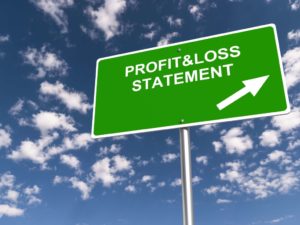
Under variable costing, fixed manufacturing costs are treated as period costs and are not assigned to products. Under absorption costing, fixed manufacturing costs are included in the product cost. This means that both variable and fixed costs are included in the product cost. Both costing methods can be used by management to make manufacturing decisions.
How Is Absorption Costing Treated Under GAAP?
In this example, using absorption costing, the total cost of manufacturing one unit of Widget X is $28. This cost includes both variable costs (direct materials, direct labor, and variable manufacturing overhead) and a portion of the fixed manufacturing overhead (which is allocated based on the number of units produced). The main criticism of absorption costing is that it does not provide accurate information for pricing decisions.
Assessing all production expenses
Fixed manufacturing overhead costs are indirect costs and they are absorbed based on the cost driver. Also, the application of Absorption Costing in the production of additional units adds to the net profit of the company since there are no more fixed costs to be allocated. Under Absorption Costing, we consider variable and fixed selling & general administrative expenses as period costs, and we expense them in the period they’re incurred; we do not include them in the cost of production. Most companies will use the absorption costing method if they have COGS. What’s more, for external reporting purposes, it may be required because it’s the only method that complies with GAAP. Companies may decide that absorption costing alone is more efficient to use.
Managerial Accounting
- Most companies use cost pools to represent accounts that are always used.
- For the past 52 years, Harold Averkamp (CPA, MBA) has worked as an accounting supervisor, manager, consultant, university instructor, and innovator in teaching accounting online.
- If all of the variables are not considered carefully (including depreciation, administrative expenses, and yearly fluctuations in your expenses), it can give you misleading results.
- This means that the total cost of inventory may be higher than it should be, which can lead to incorrect pricing decisions.
- The difference between absorption costing and variable costing methods is the treatment of fixed manufacturing overhead.
Assigning costs involves dividing the usage measure into the total costs in the cost pools to arrive at the allocation rate per unit of activity, and assigning overhead costs to produced goods based on this usage rate. When it comes to making managerial decisions, absorption costing is ineffective. Moreover, variable costing results in a single lump-sum spending line item for fixed overhead expenditures for calculating net income on the income statement.

Both the above methods are accounting techniques that companies use to allocate the cost of production over the total number of units produced. Variable costing is more useful than absorption costing if a company wishes to compare different product lines’ potential profitability. It is easier to discern the differences in profits from producing one item over another by looking solely at the variable costs directly related to production. Absorption costing also provides a company with a more accurate picture of profitability than variable costing, particularly if all of its products are not sold during the same accounting period as their manufacture.
- These costs are directly traceable to a specific product and include direct materials, direct labor, and variable overhead.
- Companies must choose between absorption costing or variable costing in their accounting systems, and there are advantages and disadvantages to either choice.
- This is because all fixed costs are not deducted from revenues unless all of the company’s manufactured products are sold.
- While both methods are used to calculate the cost of a product, they differ in the types of costs that are included and the purposes for which they are used.
- It also takes into account fluctuating turnover because costs have been allocated to the items.
- A company produces a product that requires two direct materials and one direct labor hour to produce.
In addition to its impact on financial statements, absorption costing can also affect decision-making within a company. For example, managers may be more hesitant to take on projects or expand operations if they are concerned about the high indirect costs that will be included in the cost of production. This can limit the growth potential of the company and potentially result in missed absorption costing opportunities. On the other hand, absorption costing can also provide useful information for decision-making. By including all costs in the cost of a product, managers can better understand the true cost of production and make informed decisions about pricing, profitability, and resource allocation. It’s important to note that period costs are not included in full absorption costing.
Ineffective in the formulation of a flexible budget:
- The company management should use it with diligence and responsibility so as not to create any negative effect in the decision making process.
- Absorption costing can cause a company’s profit level to appear better than it actually is during a given accounting period.
- General or common overhead costs like rent, heating, electricity are incurred as a whole item by the company are called Fixed Manufacturing Overhead.
- Another limitation is that it allocates fixed overhead to products even if they do not use the overhead.
- Under Absorption Costing, we consider variable and fixed selling & general administrative expenses as period costs, and we expense them in the period they’re incurred; we do not include them in the cost of production.
Absorption costing is also often used for internal decision-making purposes, such as determining the selling price of a product or deciding whether to continue producing a particular product. In these cases, the company may use absorption costing to understand the full cost of producing the product and to determine whether the product is generating sufficient profits to justify its continued production. Under generally accepted accounting principles (GAAP), U.S. companies may use absorption costing for external reporting, however variable costing is disallowed. Each unit of a produced good can now carry an assigned total production cost.

Step 3. Assign Costs

Absorption costing can help managers identify areas where costs can be reduced and improve overall efficiency. Another advantage of absorption costing is that financial institutions and investors generally accept it. This makes it easier to obtain financing and raises confidence in the financial statements. A final advantage is that it is relatively easy to implement and maintain. This is especially true when compared to other costing methods, such as variable costing.

Absorption Costing vs. Variable Costing: What’s the Difference?

External reports are generated for public consumption; in the case of publicly traded corporations, shareholders interact with external reports. External reports are designed to reveal financial health and attract capital. Variable costing will result in a lower breakeven price per unit using COGS.









